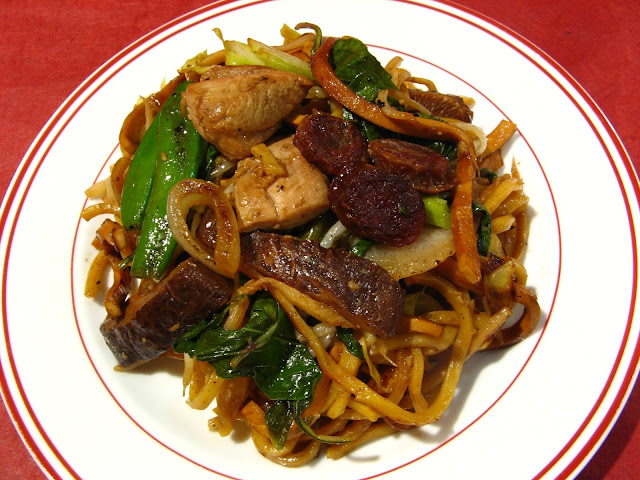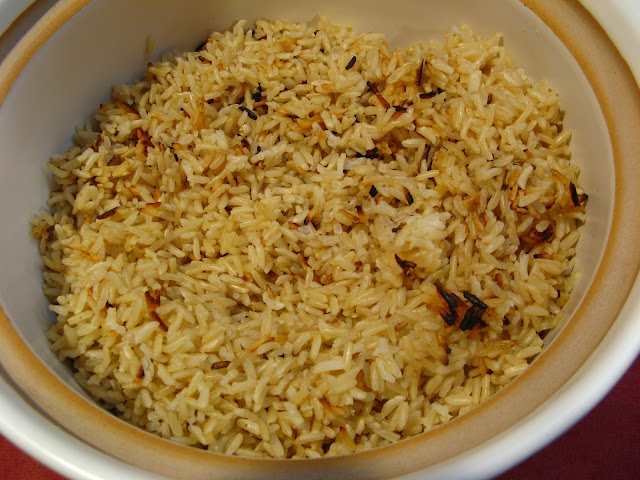Making rice is the most basic dish
in Chinese cuisine; without rice you don’t have a meal. The most modern method
is the high tech electric rice cooker that cooks the rice to perfection every
time, regardless of the type of rice used. When I was growing up, before rice
cookers became available, my Mom would make rice the old-fashioned way with a
pot. Once our family bought a rice cooker, making rice in a pot was replaced by
an electric appliance, where rice was made by pushing a button. When rice is
made in a pot, cooked rice sticks to the bottom and gets scorched (burned),
which does not happen with an electric rice cooker. After the cooked rice is
removed from the pot, there’s a layer of scorched rice that can’t be removed
from the pot, so water is added to the pot and boiled again. The scorched rice
is released from the bottom of the pot, the rice eaten, and the boiled water
drunk (飯注, faan6 zyu3). I
have always missed eating scorched rice now that rice cookers have replaced
pots.
Using a clay pot to make rice is
very similar to making rice in a pot. A crust is produced on the bottom of the
clay pot, similar to cooking rice in a pot, and you don’t have to reboil to
release the scorched rice from the bottom. The taste of the rice is very
similar to making rice in a pot. The sequence of cooking the rice in a clay pot
is:
- Pre-heat the clay pot over medium heat for 5
minutes to prevent shocking the clay pot and possible breaking it.
- Bring the clay pot rice to a boil over
medium-high heat for 10 minutes.
- Simmer the rice for 15 minutes over low heat.
- Scorch the rice using medium-high heat for 10 minutes.
- Turn off the heat and allow the clay pot to sit
for 10 minutes to release the scorched rice from the bottom.
- Serve the rice.
Given that there are many variables when cooking rice in a
clay pot, the cooked rice will vary from every time you cook it. If more water
is used, the rice will take longer to cook. If too little water is used, the
rice becomes more al dente and the volume decreases because the rice doesn’t
get fluffy. Burner heat will determine how quickly the rice cooks and how
scorched the rice will get. You just have to experiment and watch for the
indications that signal when the rice is cooked to your personal preference. I
now cook my rice using a clay pot and have sidelined my electric rice cooker.
Making rice in a clay pot seems like a simple task, but you’ll find that it
takes practice to get consistent results.
Enjoy!






